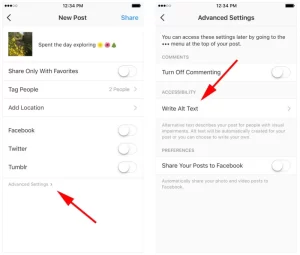“People ignore design that ignores people” – Frank Chimero
Accessible design is finally getting the attention it deserves. More and more companies and designers have been implementing inclusive design practices into the core of their work, allowing for a greater number of people to enjoy and use these designs. When designing my own semester-long project for my Capstone class, it is extremely important to me that I too try to reflect those inclusive design principles that would include accessibility and access to my project. Inherently, based on my identity, there are certain posts of exclusion that have the potential to exist among my work.
I want to try my best to make sure that my design work is accessible and inclusive to everyone, but I recognize there are limitations to my desire to do so. In exploring inclusive design work using the writing of Katie Sehl in her article “Inclusive Design for Social Media: Tips for Creating Accessible Channels”, I realized some of the ways my deliverables could implement effective design.
Printed Deliverables
The first point of exclusion I want to discuss is the potential for my project to be inaccessible in its printed version for those who are unable to see or have any sight impairments that would make the text size hard to see. The printed version of my project will not feature braille, meaning those who are blind would not be able to read the hard copy of my work. One access solution to this problem would be including my project as a pdf format online, potentially using a QR code directly on the printed portion of my work. The website that it would be uploaded to would then have a screen reader where the text on my work could be read to the viewer.
Through my research, I have also found that there are many solutions to making printed documents accessible through the use of different fonts, text alignments, colors etc. Institutes such as Vera Institute of Justice have many online resources regarding best practices for printed documents that I want to implement into my own designs.
Social Media Deliverables
Another point of exclusion I want to work through is my use of social media in my project and the ways in which I can try to implement more inclusive strategies into my design work. One solution featured in Nichelle Roberts article “Why and How to use Inclusive Design for Social Media”, is about how we can include image descriptions in the captions of our Instagram posts to allow those with visual impairments to interpret photos. There are also settings in our Instgram that allow Alt text to be written for our photos.
Example:

Getting The Word Out
I hope to potentially spread my project through the use of my own social media platforms, as well as give space to my project to live on my personal portfolio website. These multiple spaces to put my project should give people the opportunity to see my project in its PDF format.
Leave a Reply